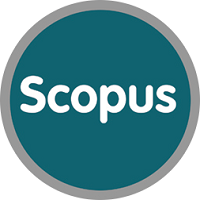Entomological effects of attractive targeted sugar bait station deployment in Western Zambia: vector surveillance findings from a two-arm cluster randomized phase III trial
Wagman, Joseph, Chanda, Benjamin, Chanda, Javan, Saili, Kochelani, Orange, Erica, Mambo, Patricia, Muyabe, Rayford, Kaniki, Tresford, Mwenya, Mwansa, Ng’andu, Mirabelle, Sakala, Jimmy, Ngulube, Willy, Miller, John, Arnzen, Annie, Silumbe, Kafula, Mwaanga, Gift, Simubali, Limonty, Mungo, Alice, Mburu, Monicah M., Simulundu, Edgar, Mambwe, Brenda, Kasaro, Racheal, Mulube, Conceptor, Mwenda, Mulenga, Hamainza, Busiku, Ashton, Ruth A., Eisele, Thomas P., Harris, Angela F., Entwistle, Julian, Yukich, Joshua, Slutsker, Laurence, Burkot, Thomas R., and Littrell, Megan (2024) Entomological effects of attractive targeted sugar bait station deployment in Western Zambia: vector surveillance findings from a two-arm cluster randomized phase III trial. Malaria Journal, 23 (1). 214.
|
PDF (Published Version)
- Published Version
Available under License Creative Commons Attribution. Download (953kB) | Preview |
Abstract
Background: Attractive targeted sugar bait (ATSB) stations are a novel tool with potential to complement current approaches to malaria vector control. To assess the public health value of ATSB station deployment in areas of high coverage with standard vector control, a two-arm cluster-randomized controlled trial (cRCT) of Sarabi ATSB® stations (Westham Ltd., Hod-Hasharon, Israel) was conducted in Western Province, Zambia, a high-burden location were Anopheles funestus is the dominant vector. The trial included 70 clusters and was designed to measure the effect of ATSBs on case incidence and infection prevalence over two 7-month deployments. Reported here are results of the vector surveillance component of the study, conducted in a subset of 20 clusters and designed to provide entomological context to guide overall interpretation of trial findings. Methods: Each month, 200 paired indoor-outdoor human landing catch (HLC) and 200 paired light trap (LT) collections were conducted to monitor An. funestus parity, abundance, biting rates, sporozoite prevalence, and entomological inoculation rates (EIR). Results: During the study 20,337 female An. funestus were collected, 11,229 from control and 9,108 from intervention clusters. A subset of 3,131 HLC specimens were assessed for parity: The mean non-parous proportion was 23.0% (95% CI 18.2–28.7%, total n = 1477) in the control and 21.2% (95% CI 18.8–23.9%, total n = 1654) in the intervention arm, an OR = 1.05 (95% CI 0.82–1.34; p = 0.688). A non-significant reduction in LT abundance (RR = 0.65 [95% CI 0.30–1.40, p = 0.267]) was associated with ATSB deployment. HLC rates were highly variable, but model results indicate a similar non-significant trend with a RR = 0.68 (95%CI 0.22–2.00; p = 0.479). There were no effects on sporozoite prevalence or EIR. Conclusions: Anopheles funestus parity did not differ across study arms, but ATSB deployment was associated with a non-significant 35% reduction in vector LT density, results that are consistent with the epidemiological impact reported elsewhere. Additional research is needed to better understand how to maximize the potential impact of ATSB approaches in Zambia and other contexts. Trial registration number: This trial was registered with Clinicaltrials.gov (NCT04800055, 16 March 2021).
| Item ID: | 87145 |
|---|---|
| Item Type: | Article (Research - C1) |
| ISSN: | 1475-2875 |
| Copyright Information: | © The Author(s) 2024. This article is licensed under a Creative Commons Attribution 4.0 International License, which permits use, sharing, adaptation, distribution and reproduction in any medium or format, as long as you give appropriate credit to the original author(s) and the source, provide a link to the Creative Commons licence, and indicate if changes were made. The images or other third party material in this article are included in the article's Creative Commons licence, unless indicated otherwise in a credit line to the material. If material is not included in the article's Creative Commons licence and your intended use is not permitted by statutory regulation or exceeds the permitted use, you will need to obtain permission directly from the copyright holder. To view a copy of this licence, visit http://creativecommons.org/licenses/by/4.0/. The Creative Commons Public Domain Dedication waiver (http://creativecommons.org/publicdomain/zero/1.0/) applies to the data made available in this article, unless otherwise stated in a credit line to the data. |
| Date Deposited: | 10 Nov 2025 06:15 |
| FoR Codes: | 42 HEALTH SCIENCES > 4202 Epidemiology > 420202 Disease surveillance @ 100% |
| SEO Codes: | 20 HEALTH > 2099 Other health > 209999 Other health not elsewhere classified @ 100% |
| Downloads: |
Total: 2 Last 12 Months: 2 |
| More Statistics |



